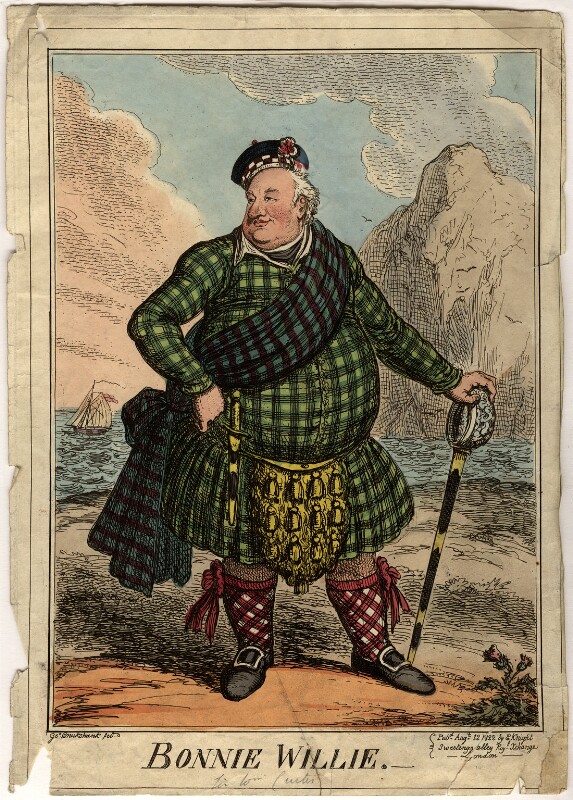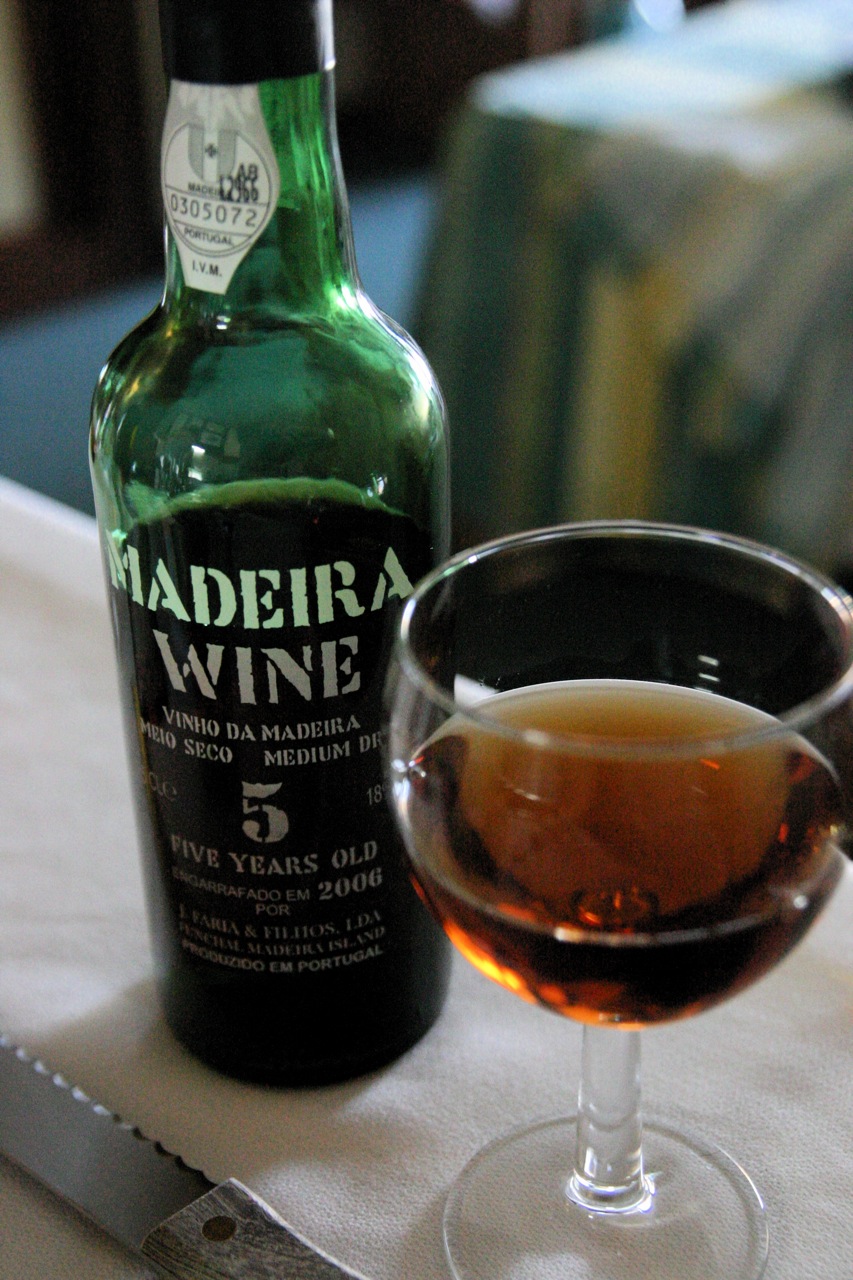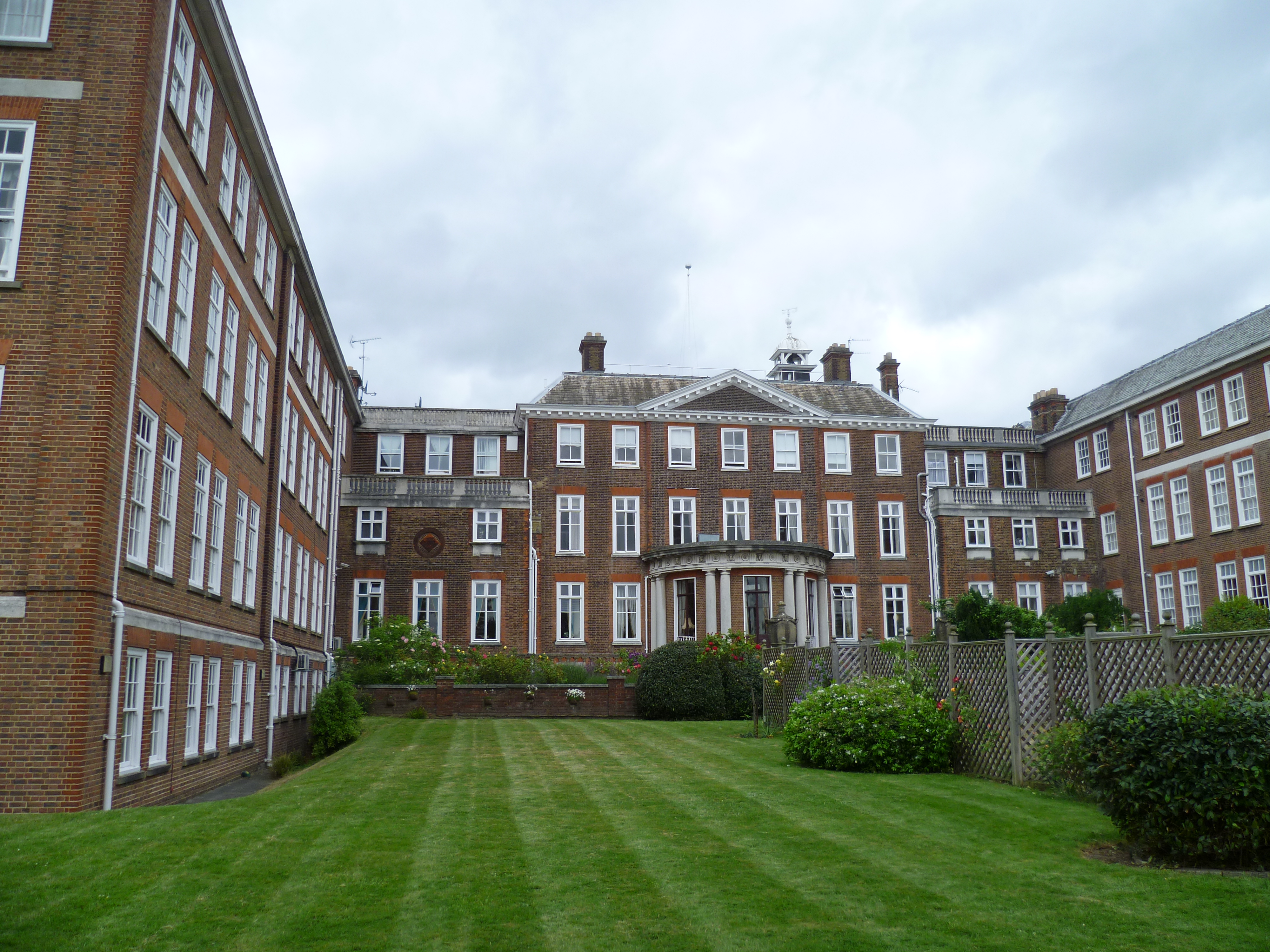|
Cullands Grove
Cullands Grove, also known as Cannon's, was a country house and estate in Southgate, Middlesex. It was built on an area of woodland formerly known as Gullands Grove. Cullands Grove was known for the lavish banquets held there by Sir William Curtis 1st Baronet of Cullands Grove and after his death in 1829 it took a week to auction the contents of the house and estate which included 370 dozen bottles of wine. Around 1840, the estate was merged into the Grovelands estate and the house demolished. Location Cullands Grove house and estate stood in an area of former woodland, north of where Alderman's Hill now lies, on the corner with Cannon Hill, on the road from Southgate to Palmers Green in the county of Middlesex. It was of about . History In the mid 18th century, possibly in 1754, the insurance broker Stephen Godin bought a Southgate woodland known as Gullands Grove from Walter Henshaw and Henry Hadley. Pam, David. (1982) ''Southgate and Winchmore Hill: A Short History''. Lon ... [...More Info...] [...Related Items...] OR: [Wikipedia] [Google] [Baidu] |
The Home Counties Magazine
''The Home Counties Magazine'' was a magazine of the "topography of London, Middlesex, Essex, Herts, Bucks, Berks, Surrey, and Kent", the home counties of England, that was published from 1899 to 1912. It incorporated ''Middlesex and Hertfordshire Notes and Queries'' (1895 to 1898). History ''The Home Counties Magazine'' was established in 1899 and incorporated ''Middlesex and Hertfordshire Notes and Queries'' (1895 to 1898) and for the first six volumes had the same editor as that journal in William Hardy FSA (1857-1919). Hardy expressed the wish in the first edition of the new magazine that it would become "for London, for the places in which Londoners reside, and the places they often visit, what the old, yet ever new, ''Notes and Queries ''Notes and Queries'', also styled ''Notes & Queries'', is a long-running quarterly scholarly journal that publishes short articles related to "English language and literature, lexicography, history, and scholarly antiquarianism".From th ... [...More Info...] [...Related Items...] OR: [Wikipedia] [Google] [Baidu] |
Madeira Wine
Madeira is a fortified wine made on the Portuguese Madeira Islands, off the coast of Africa. Madeira is produced in a variety of styles ranging from dry wines which can be consumed on their own, as an apéritif, to sweet wines usually consumed with dessert. Cheaper cooking versions are often flavoured with salt and pepper for use in cooking, but these are not fit for consumption as a beverage. The islands of Madeira have a long winemaking history, dating back to the Age of Exploration (approximately from the end of the 15th century) when Madeira was a standard port of call for ships heading to the New World or East Indies. To prevent the wine from spoiling, neutral grape spirits were added. On the long sea voyages, the wines would be exposed to excessive heat and movement which transformed the flavour of the wine. This was discovered by the wine producers of Madeira when an unsold shipment of wine returned to the islands after a round trip. Today, Madeira is noted for i ... [...More Info...] [...Related Items...] OR: [Wikipedia] [Google] [Baidu] |
Buildings And Structures Demolished In 1840
A building, or edifice, is an enclosed structure with a roof and walls standing more or less permanently in one place, such as a house or factory (although there's also portable buildings). Buildings come in a variety of sizes, shapes, and functions, and have been adapted throughout history for a wide number of factors, from building materials available, to weather conditions, land prices, ground conditions, specific uses, prestige, and aesthetic reasons. To better understand the term ''building'' compare the list of nonbuilding structures. Buildings serve several societal needs – primarily as shelter from weather, security, living space, privacy, to store belongings, and to comfortably live and work. A building as a shelter represents a physical division of the human habitat (a place of comfort and safety) and the ''outside'' (a place that at times may be harsh and harmful). Ever since the first cave paintings, buildings have also become objects or canvasses of much art ... [...More Info...] [...Related Items...] OR: [Wikipedia] [Google] [Baidu] |
Demolished Buildings And Structures In The London Borough Of Enfield
Demolition (also known as razing, cartage, and wrecking) is the science and engineering in safely and efficiently tearing down of buildings and other artificial structures. Demolition contrasts with deconstruction, which involves taking a building apart while carefully preserving valuable elements for reuse purposes. For small buildings, such as houses, that are only two or three stories high, demolition is a rather simple process. The building is pulled down either manually or mechanically using large hydraulic equipment: elevated work platforms, cranes, excavators or bulldozers. Larger buildings may require the use of a wrecking ball, a heavy weight on a cable that is swung by a crane into the side of the buildings. Wrecking balls are especially effective against masonry, but are less easily controlled and often less efficient than other methods. Newer methods may use rotational hydraulic shears and silenced rock-breakers attached to excavators to cut or break through woo ... [...More Info...] [...Related Items...] OR: [Wikipedia] [Google] [Baidu] |
Country Houses In London
A country is a distinct part of the world, such as a state, nation, or other political entity. It may be a sovereign state or make up one part of a larger state. For example, the country of Japan is an independent, sovereign state, while the country of Wales is a component of a multi-part sovereign state, the United Kingdom. A country may be a historically sovereign area (such as Korea), a currently sovereign territory with a unified government (such as Senegal), or a non-sovereign geographic region associated with certain distinct political, ethnic, or cultural characteristics (such as the Basque Country). The definition and usage of the word "country" is flexible and has changed over time. ''The Economist'' wrote in 2010 that "any attempt to find a clear definition of a country soon runs into a thicket of exceptions and anomalies." Most sovereign states, but not all countries, are members of the United Nations. The largest country by area is Russia, while the smallest i ... [...More Info...] [...Related Items...] OR: [Wikipedia] [Google] [Baidu] |
Minchington Hall
Minchington Hall, or Mincington Hall, or Minchenden House, was a country house and estate in Southgate, then in the county of Middlesex in England, and now in Greater London. It was on Southgate Green and the south side of Waterfall Road, and adjoined Arnolds (Arnos Grove) slightly further east, which was originally less significant than Minchington. The estate was merged into Arnos Grove in 1853 and the house demolished. History The estate is believed to have acquired its name from the nuns (Old English: ''myncen'') who occupied a nunnery where Broomfield House is now. Before the Dissolution, the Augustinian priory of Clerkenwell owned land in the area.Minchenden School Golden Anniversary 1919–1969'. Minchenden School, London, 1969. p. 3. The estate was part of the Cecil lands and in 1614 it was sold by the Earl of Salisbury to John Weld of Arnolds when it was described as a wood of . It was later owned by Sir Thomas Stringer who sold it to Sir Thomas Wolstenholme bef ... [...More Info...] [...Related Items...] OR: [Wikipedia] [Google] [Baidu] |
Arnos Grove House
Arnos Grove, originally known as Arnolds, is a grade II* listed house in Cannon Hill, Southgate, London. History The house was built after the London banker James Colebrooke bought the Arnolds estate in 1719 or 1720. Dumayne, Alan. (1987) ''Southgate: A glimpse into the past''. Alan Dumayne, London, 1987. p. 124. The estate was previously owned by William Whitmore, inherited via Thomas Whitmore from the daughter of William Acton, who purchased from Sir John Weld. The house was later inherited by George Colebrooke and sold to Abraham Hume. Locals called the estate Arno's, and next owner, Sir William Mayne (later Lord Newhaven), renamed the house and estate Arnos Grove, which is now pronounced as though it never had an apostrophe.Hidden London - Arnos Grove In 1777, it was bought by [...More Info...] [...Related Items...] OR: [Wikipedia] [Google] [Baidu] |
John Donnithorne Taylor
John Donnithorne Taylor (1798 – 1885) was a member of the Taylor-Walker brewing family and the owner of Grovelands House. In the 1830s, Mr and Mrs Taylor were involved in a legal case in which Mrs Taylor requested the restitution of conjugal rights. Around 1840 he purchased Cullands Grove Cullands Grove, also known as Cannon's, was a country house and estate in Southgate, Middlesex. It was built on an area of woodland formerly known as Gullands Grove. Cullands Grove was known for the lavish banquets held there by Sir William Cur ... house and estate and merged the grounds into the adjoining Grovelands estate and demolished the house. [...More Info...] [...Related Items...] OR: [Wikipedia] [Google] [Baidu] |
Mantrap (snare)
A mantrap is a mechanical physical security device for catching poachers and trespassers. They have taken many forms, the most usual being like a large foothold trap, the steel springs being armed with teeth which meet in the victim's leg. Since 1827, they have been illegal in England, except in houses between sunset and sunrise as a defence against burglars. Other traps such as special snares, trap netting, trapping pits, fluidizing solid matter traps and cage traps could be used. Mantraps that use deadly force are illegal in the United States, and in notable tort law cases the trespasser has successfully sued the property owner for damages caused by the mantrap. There is also the possibility that such traps could endanger emergency service personnel such as firefighters who must forcefully enter such buildings during emergencies. As noted in the important American court case of ''Katko v. Briney'', "the law has always placed a higher value upon human safety than upon me ... [...More Info...] [...Related Items...] OR: [Wikipedia] [Google] [Baidu] |
Shetland Ponies
The Shetland pony is a Scottish breed of pony originating in the Shetland Isles in the north of Scotland. It may stand up to at the withers. It has a heavy coat and short legs, is strong for its size, and is used for riding, driving, and pack purposes. History Shetland ponies originated in the Shetland Isles, located northeast of mainland Scotland. Small horses have been kept in the Shetland Isles since the Bronze Age. People who lived on the islands probably later crossed the native stock with ponies imported by Norse settlers. Shetland ponies also were probably influenced by the Celtic pony, brought to the islands by settlers between 2000 and 1000 BCE. The harsh climate and scarce food developed the ponies into extremely hardy animals. Shetland ponies were first used for pulling carts and for carrying peat, coal and other items, and ploughing land. Then, as the Industrial Revolution increased the need for coal in the mid-nineteenth century, thousands of Shetla ... [...More Info...] [...Related Items...] OR: [Wikipedia] [Google] [Baidu] |
Beer
Beer is one of the oldest and the most widely consumed type of alcoholic drink in the world, and the third most popular drink overall after water and tea. It is produced by the brewing and fermentation of starches, mainly derived from cereal grains—most commonly from malted barley, though wheat, maize (corn), rice, and oats are also used. During the brewing process, fermentation of the starch sugars in the wort produces ethanol and carbonation in the resulting beer.Barth, Roger. ''The Chemistry of Beer: The Science in the Suds'', Wiley 2013: . Most modern beer is brewed with hops, which add bitterness and other flavours and act as a natural preservative and stabilizing agent. Other flavouring agents such as gruit, herbs, or fruits may be included or used instead of hops. In commercial brewing, the natural carbonation effect is often removed during processing and replaced with forced carbonation. Some of humanity's earliest known writings refer to the productio ... [...More Info...] [...Related Items...] OR: [Wikipedia] [Google] [Baidu] |
Hock (wine)
Hock is a British term for German white wine. It sometimes refers to white wine from the Rhine region (specifically Riesling) and sometimes to all German white wine. The word ''hock'' is short for the obsolete word ''hockamore'', an alteration of "Hochheimer", derived from the name of the town of Hochheim am Main in Germany. The term seems to have been in use in the 17th century, initially for white wines (predominantly Riesling) from the Rheingau, but in the 18th century it came to be used for any German white wine sold in Britain, to convey some of the then very high prestige of Rheingau wine to (often much) lesser German wines. It seems probable that Queen Victoria's visit in 1850 to Hochheim (in Rheingau) and its vineyards during harvest time contributed to the continued use of the term. By then, those Rheingau wines commanded high prices, on par with, and sometimes higher than, the best wines from Bordeaux and Burgundy Burgundy (; french: link=no, Bourgogne ) is a h ... [...More Info...] [...Related Items...] OR: [Wikipedia] [Google] [Baidu] |










